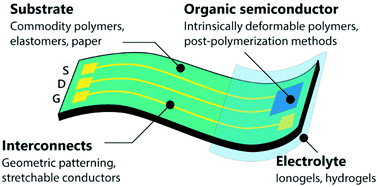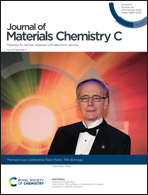Advances and opportunities in development of deformable organic electrochemical transistors
Abstract
Organic electrochemical transistors (OECTs) have been revived as potentially versatile platforms for bioelectronic applications due to their high transconductance, direct ionic-electronic coupling, and unique form factors. This perceived applicability to bioelectronics can be attributed to the incorporation of organic mixed conductors that facilitate both ionic and electronic transport, enabling material-inherent translation from biological signals to abiotic readouts. In the past decade, multiple synthetic breakthroughs have yielded channel materials that exhibit significant hole/electron transport while displaying electroactivity in aqueous media. Yet, implicit in the rationale of OECTs as bioelectronic devices is they can be fabricated to be mechanically compatible with biological systems, even though unified guidelines for deformable OECTs remain unclear. In this Perspective, we highlight recent advances for imparting deformability. Specifically, materials selection, design, and chemistry for integral parts of the transistor – substrate, electrolyte, interconnects, and (polymeric) channel materials—will be discussed in the context of benchmarks set by select bioelectronics applications. We conclude by identifying key areas for future research towards mechanically compliant OECTs.

- This article is part of the themed collection: Celebrating Tobin Marks’ 75th Birthday


 Please wait while we load your content...
Please wait while we load your content...
